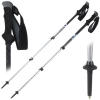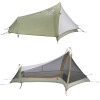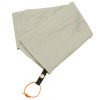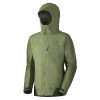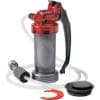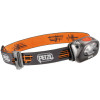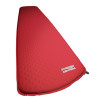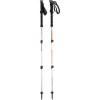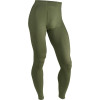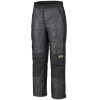This post is long overdue, but I need to get these thoughts down for posterity before it’s too late, so here we go…
As many of you now know, a number of things went wrong and a number of bad decisions were made. However, the straw that broke the camel’s back can readily be identified: our water filter broke on Day 5!
We did some research and discovered that there was an EMS about 15 miles away. We were all set to hike out, find a replacement, get a few odds and ends fixed/replaced, regroup in town for a night, hike back in and carry on with the hike. On the hike out we arrived at the conclusion that the most reasonable thing to do was to call it quits and try again in a year or so. At this point, I’ll rewind and see if i can do justice to the whole set of circumstances that accrued and colored our decision making…
Step number one, or so we thought, would be to plan out the whole hike to the best of our abilities. We pulled out the LT Guidebook, a topo map of Vermont, a calculator, and a spreadsheet and set about estimating how much we should aim to hike each day. We built it easy days, accounted for variations in terrain, and planned for overshoots and undershoots at various legs of the trip. This seemed not unreasonable…
From this tentative itinerary, we estimated overall trip length and used it as a baseline for the rest of our planning. We calculated our average mileage to be 15mi/day (ranging between 10mi/day to 20mi/day at times). This seemed pretty do-able – last summer Rob and I managed to cover 55 miles in 2.5 days and go to the gym the next day…
Next we loaded our packs with all of our non-expendable gear items: clothes, tents, cook set, water filtering equipment, emergency equipment, etc… From this weight extrapolated our average pack weight to be about 60 lbs. for most days. This seemed reasonable as well; in the winter I often carry about that much doing overnight ski skips in the Whites.
Using our average mileage and average pack weight we able to estimate our required caloric intake/day. (We found a reasonable looking chart that correlates those two variables.) This came out to a be a staggering 4500-5500 calories/day. This was sort of cause for concern due to the sheer cost of and weight of all of those calories. We set about finding the most calorie dense foods we could get our hands on…
- The pemmican, seemed like a solid bet: about $25 for ~5 lbs, yielding nigh incalculable calorie count…
- Over $100 of nuts and berries – they don’t go bad, they test great, calories, nutrients, how can you go wrong?
- Fifty servings of oatmeal – cheap, filling, light
- Gatorade mix – calories, electrolytes
- Clif Shot Bloks, Clif Bars – dense calories, carbs, protein
- And last but not least, 2 servings of assorted Backpacker’s pantry each per day plus a sprinkling of deserts and breakfasts.
That was a ton of money but, really no more than I would have spent eating in Boston for that amount of time. Now the question became how to get all of that food to the trail when we needed it there. We felt that minimizing rendezvous with various cohorts was paramount in order to cut back on total points of failure as well as to keep planning overhead to a minimum. We arranged to have Andrew Ziehl meet us at Killington (about 1/3 of the way North) on Day 7 and we planned to visit Alex’s cousins’ house at Mt. Mansfield whenever we managed to get there. We would pick up an extra 1/3 of our pre-bought food at each of these locations. The only stop we needed to get to by a specific time was Killington, and even that could be pushed back by a day or relocated closer if need be. It seemed pretty flexible.
Day 1
We planned to leave at 7am, arrive at North Adams, MA around 11 and hit the trail for a leisurely 10 mile stroll through the rolling hills of southern Vermont. None of this happened. We left at more like 8. We got to North Adams just after noon. We forgot that North Adams is 4 miles south of the border, so we actually had a 14 mile hike ahead of us. We did not become aware of this fact until about 10 miles down the trail when we began to wonder why we were’t there yet. Additionally it rained most of the day, the air was still, the humidity was in excess of 100% and the temps had to be in the 90s. It was a challenging first day. We made it to camp around 8 pm. We were on schedule, but pretty beat. I actually needed two hands to raise my Nalgene bottle for a drink because my shoulders were so tired… Before going to bed I gave my feet a brief inspection and what I discovered was rather alarming: my feet were swollen and covered in blisters…I’d put hundreds of miles on these boots over the previous year. Apparently the combination of 14 miles in the pouring rain and a 60 lb. pack take a toll on your feet. I slathered them in Neosporin and fell asleep.
Day 2
When we woke up I endeavored to fix my feat with topical pain killers, sterile gauze and duct tape. I’m pretty sure it helped because we managed 16 miles that day. For some reason the final 8 miles was 100% devoid of water sources so by the time we rolled into camp we were down to a few drops each. We were still on schedule, but no less exhausted, nor healed than we were at the end of Day 1. We decided to make camp, sleep in and take a half day the next day. The schedule and food provisions allowed for a day or two of slacking and this one seemed warranted given our condition. Plus the camp site was amazing – at altitude with a great view.
Day 3
After a whole night of sleep, and a whole morning of slacking, my feet were still totally mangled and hardly fit for activity. This was supposed to be a 20 mile day – our first really hard day of the hike and we assumed that we’d be warmed up by this time. We were not. We hiked a scant 4 miles to the next closest camp site. Overall, it was a great day, we were in no rush at any point, we had ample time for recovery, we made it to camp on time for once, the weather was pleasant, we didn’t nearly run out of water. Nothing went wrong. Our camp site was even better than the previous one.
Note: Actually, one thing went wrong. I set one of my socks on fire trying to dry them by a campfire. Literally one side was on fire while the other was still soaking wet…
Day 4
Having done some hardcore slacking the previous day, and having only 10 miles to cover, Day 4 also turned out to be a great day (It helped that we took a huge shortcut, avoiding summiting Stratton Mountain). Alex’s fly swatting count broke 100, and we made it to camp on time. We discovered that we were keeping pace with some of the AT through hikers which was a good confidence boost, as well as (mostly) good company. We also discovered that we had gained notoriety as “those guys that are constantly eating”. We thought we were consuming a reasonable amount of food. As it turns out, many of the AT hikers were eating less food and carrying only 4-5 days worth at a time, making stops in towns as necessary. In any event, we were enjoying feasting constantly and felt poised to seriously pick up the pace and start getting back on track.
Day 5
Day 5 was pivotal. We felt that making it past day 5 would put us close enough to Killington to get our food one way or another. Between my solar chargers and our phones we were able to communicate to Andrew that an earlier rendezvous might be needed. Things were under control. It seemed like a given that we would be able to hit our goals for the next day or two at which point we would be free to make as many schedule adjustments as possible.
Of course this was all before the water filter broke. Somehow a bit of sand or sediment got sucked up into the cylinder of the pump and shredded an O-ring. It could not be repaired and we did not have enough fuel (or the time) to boil all of our water. We had to replace it with a new one. A caretaker was able to direct us to a nearby EMS – about 15 miles by foot. Fortunately 8 of it was on the way. The final stretch was along roads in some town. We felt it would be a good excuse to get real food, sleep indoors, and resupply. We covered 8 miles in 4 or 5 hours – by all indications we were actually starting to get warmed up for the rest of the hike…
However started to do some math and began to have serious reservations about our ability to keep pace. Yet again it poured essentially all day (or at least for all of the time we were hiking). My feet were slowly getting better (still swollen and blistery, but to a lesser degree), but beating on them in the heat and rain for another 15 miles would be a set back for sure.
We were a good 10 miles behind and our EMS excursion was going to set us back another 10 or so. A number of things occurred to us at this point. For starters, we were not going to be make it to Killington. Andrew only had a long weekend to spend meeting us with the food – we weren’t going to make it to Killington until Monday in the best case. If we were unable to rendezvous with him we would be forced to abandon that parcel of food (at least until we got back to Boston) and proceed buying extra food along the way in towns that we passed. The second realization was that it seemed highly probable that more set backs would occur – in other words, unforeseeable situations, which we would no doubt be able to deal with, as we had thus far, would crop up and set us back farther. This was problematic for two reasons:
- We had planned on being away from work/Boston for a relatively finite period of time.
- We had purchased our food and other consumable supplies based on that relatively finite period of time.
As we fell more and more behind we would be forced to get more and more food, re-arrange, our meetings at Mansfield and Canada and take more time out of work. Additionally the sense of urgency was growing. We realized our plan was fundamentally flawed and unsustainable. By this time we saw that we were taking a radically different approach than our peers on the trail. It was debatable as to whether or not we’d make it to Canada at all, given our time and money constraints. It seemed that the best plan would be to call it quits and do things correctly from scratch at a later date.
Summary
So what is correct? It seems that ‘correct’ would be the following:
- Don’t do 30 miles in the first two days no matter how strong you think you are or how broken in you think your boots are, especially if it’s going to be hot and humid.
- Everyone else had about 40 or 50 lbs of stuff compared to our 65. Carry less redundant stuff (lamps, batteries, duct tape, repair materials – expect things to fail/run out and replace them as needed)…
- Don’t try to meet people places – cell service is too spotty for this to be reliably coordinated.
- I want to say eat less because that’s what everyone else was doing, but I also prefer not to waste away to 150 lbs in 2.5 weeks… the jury’s out on this one…
- Carry only 4-5 days of food at a time and resupply when you run low.
- Allow for time spent resupplying.
- Allow for time spent chillin’ at random places that seem nice to chill at – we were in a huge rush the entire 5 days. It was stressful which was counter-productive and less fun.
- Allow for time spent recouping from whatever you might need to recoup from.
- The last bullet point deserves a whole paragraph:
Do not attempt to adhere to any sort of rigid schedule where rigid schedule is defined as anything correlating dates, times, waypoints, goals, destinations, supplies or the like. In other words – NO SCHEDULE. It won’t work!
The irony of all this, of course, is that we seriously considered just winging it in lieu of a formal plan and decided that this was irresponsible and not the way to tackle such a serious endeavor…
It’s all good though, now we know what to do next time and as an added benefit, I can’t feel any load less than 35 lbs.
